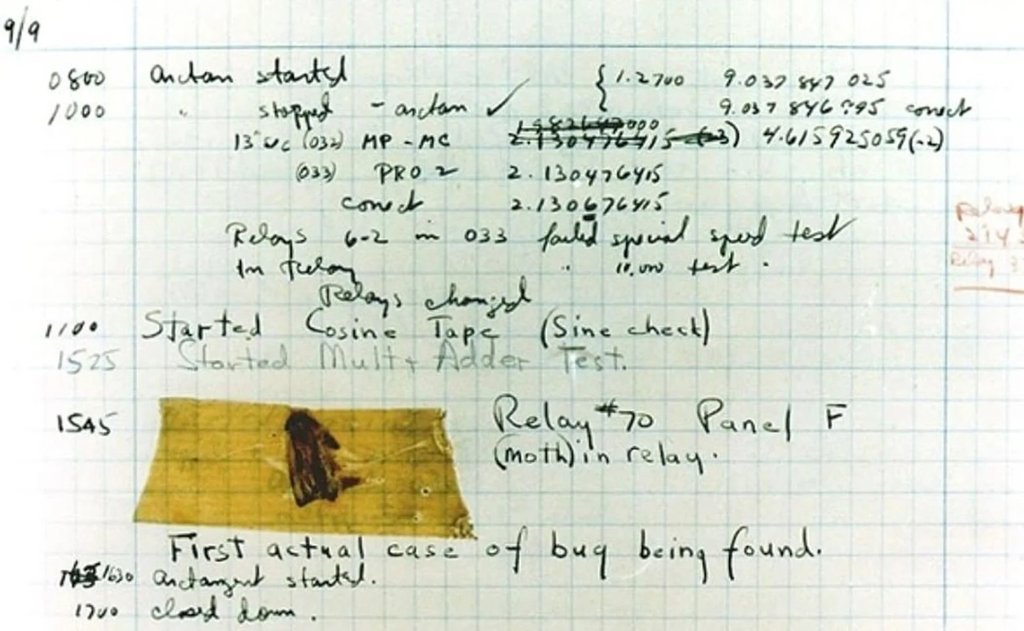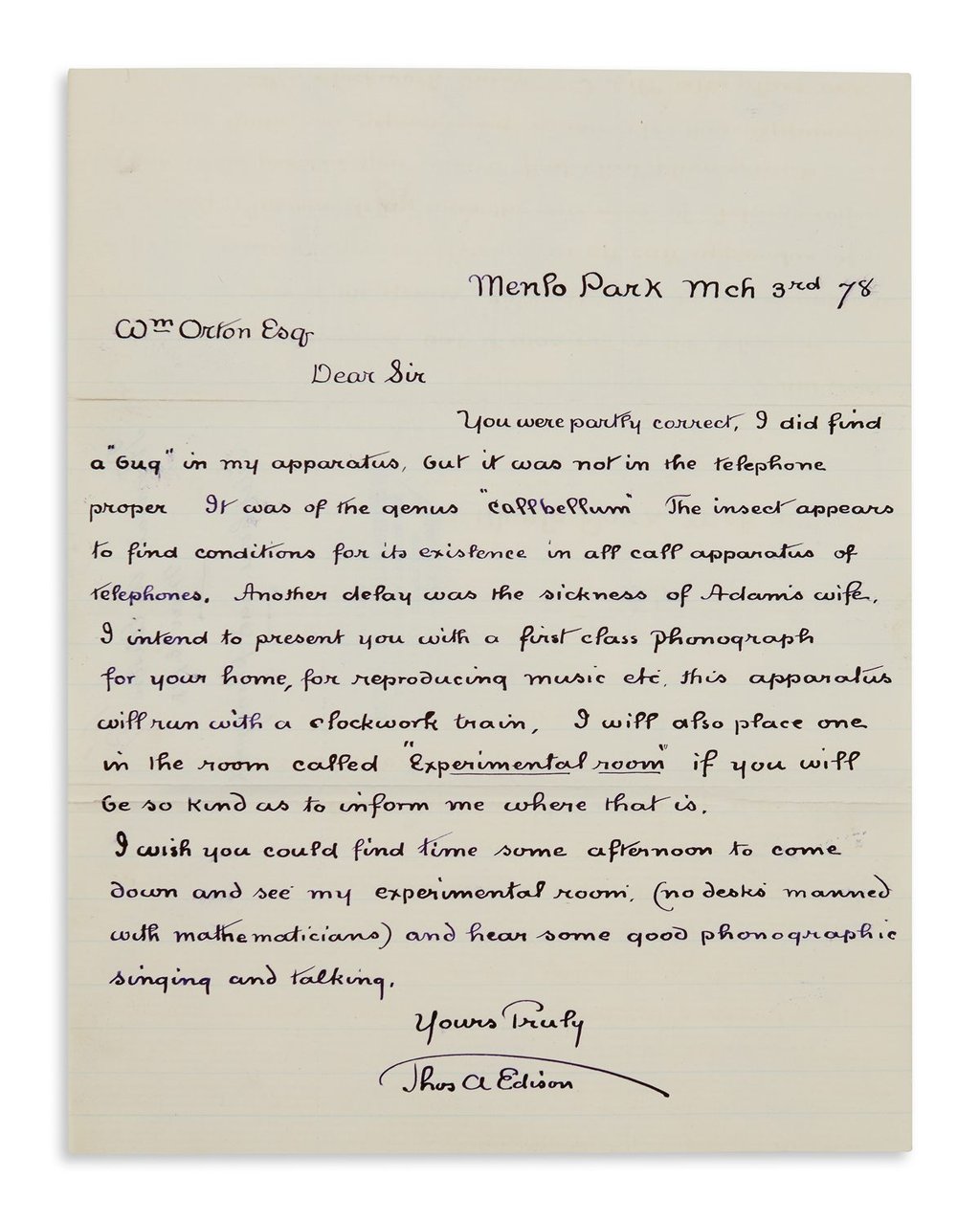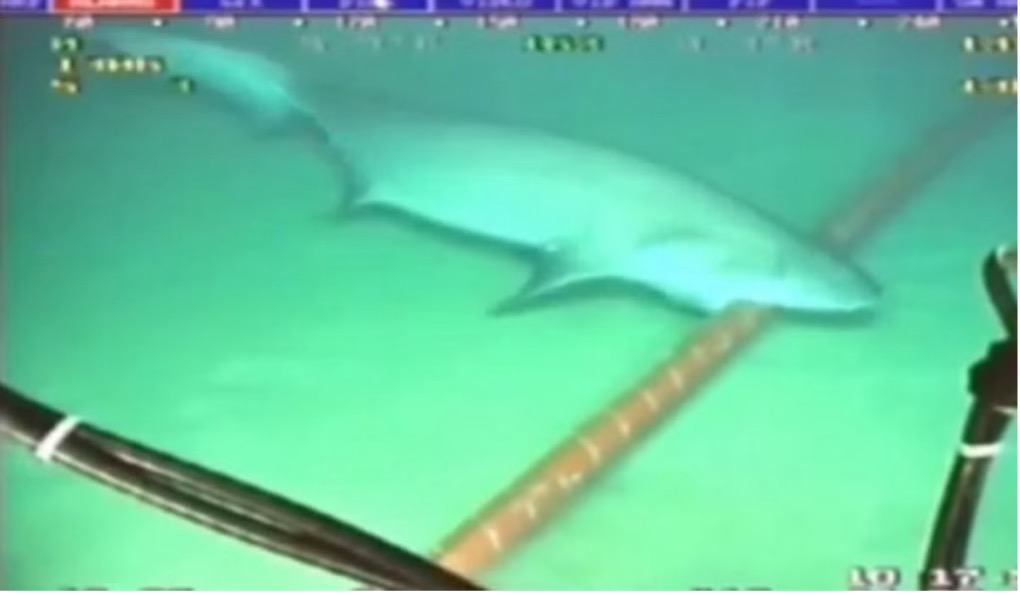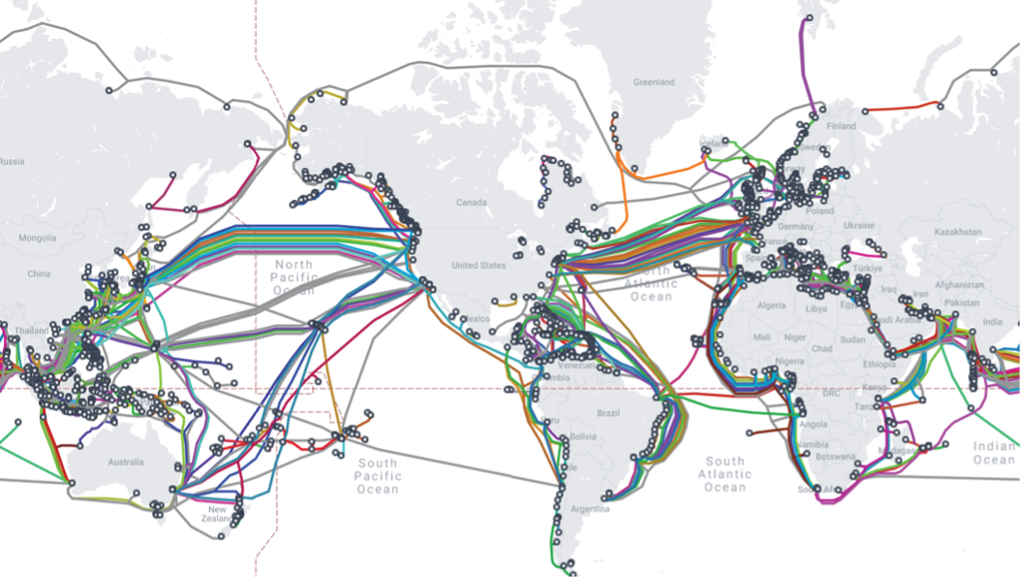It's September 9, 1947, Grace Hopper and her research team are working on Mark II, one of the earliest electrical and programmable computers. As with any prototype, malfunctions are not unusual. On that particular day, the team has an unexpected encounter: a moth trapped in a relay. The logbook reads: “15.45, Relay #70, Panel F, (moth) in relay. First actual case of bug being found.” Posted next to it, a piece of yellowed tape sticking the moth to the page.

Figure 1. Page from the logbook of Hopper's team

Figure 2. Thomas Edison's letter to William Orton, Western Union's president
While this was the first time Hopper’s team encountered a moth, it wasn't the first time bugs had been mentioned in relation to electrical systems. In the late 1870s, Thomas Edison reported a similar issue while working on the phonograph. A “bug” had disrupted his system, noting: “The insect appears to find conditions for its existence in all call apparatus of telephones.” Both instances have become key moments in the origin of computer bugs: glitches, faults, or unexpected failures in a system.

Figure 3 Still from the video Shark Bites Subcable

Fast forward to 2010. A short YouTube video succinctly titled “Shark Bites Subcable” shows a shark approaching and biting a large submarine cable. The camera captures the shark’s calm approach, its jaws closing around the cable, twisting, turning, pausing and then slowly floating on. This scene, like Hopper’s moth or Edison’s bug, invites us to wonder: What was this shark doing? Did it mistake the cable for prey, or was it simply exploring its environment? Was it an act of resistance? What about the bug? Did it find a suitable habitat in Edison’s telephone apparatus? Did Hopper’s moth get stuck in the relay, or was it in search of something? We may never know, but this uncertainty itself is significant. Perhaps, rather than viewing these encounters as glitches or failures, we can see them as opportunities for deeper understanding. What if we see unexpected, uncomfortable and uncertain encounters not as issues to be solved, but as the more-than-human world revealing itself to us? What are the bugs and shark bites in your work? By interpreting them differently, we may discover new ways of coexisting with the more-than-human world, recognizing that what appears to be a flaw might be another species’ way of exploring their own path towards a thriving planet.




